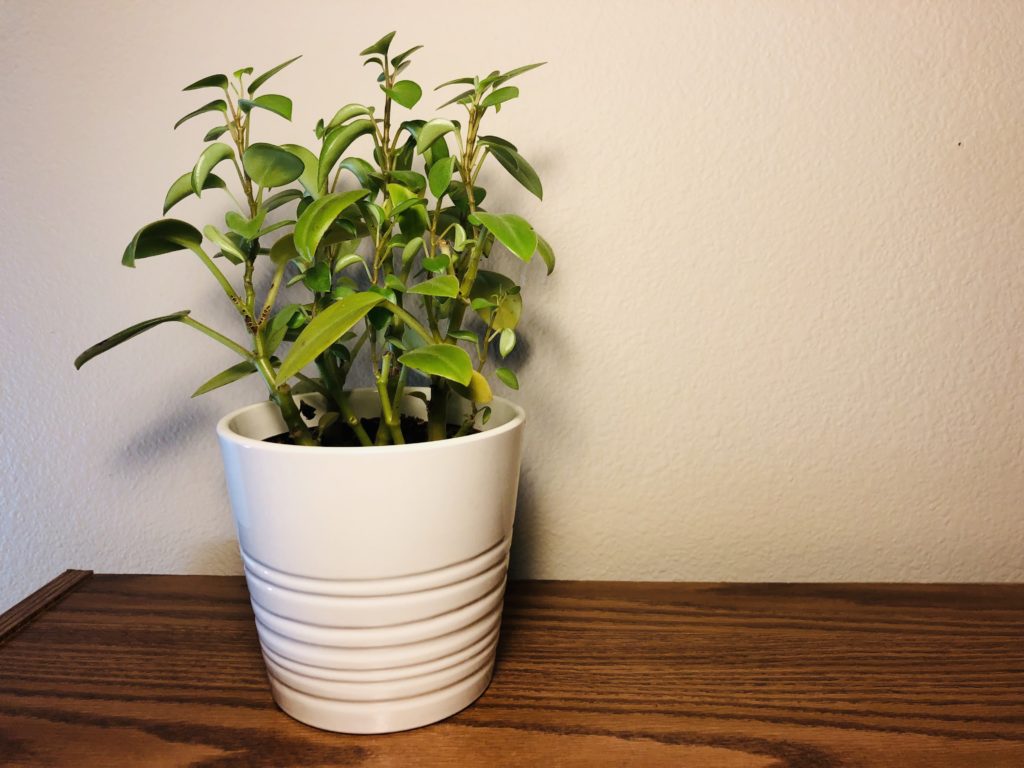Act like you have a green thumb and keep another plant from dyingZ

Plants are hard to keep alive for anyone, let alone a busy college student, but hope is not lost. There are steps you can take to prevent the death of your beloved houseplant. Follow these five steps to gain insight into improving your plant parenting skills.
Step 1: Know the purpose of having a plant
Taking care of a plant requires some diligence. It’s easy to forget about your plant if you do not understand what motivated you to get it in the first place.
Just like in business, if you set out with a clear idea of what you want to accomplish, you will be more likely to succeed. Knowing the purpose of having a plant will keep you motivated to take care of it. So, what are some good plant purposes to have in mind before you buy a plant?
One plant mission statement could focus on the potential to boost your health. A 2016 article on Healthline reviewed by Dr. Deborah Weatherspoon lists the benefits of having an indoor plant. According to the article, plants purify the air, lower potential for illness, improve your mood and increase concentration and memory.
Another possible purpose may simply be to function as an inexpensive and trendy decoration. A splash of green will give a nice accent color to the boring, beige walls of an apartment or residence hall room. Plants can also be easily transported to a new apartment, and they don’t require you to pound nails into the wall or wrestle with Command strips.
Step 2: Choose the right type of plant
This is probably the most important step. Growing a lemon tree in your dorm room to support your new lemonade business may sound like a great idea, but some plants just aren’t meant to be caged up indoors.
A few options for easy-to-grow houseplants from a 2016 HGTV.com article titled “Forgiving Houseplants” include aloe, snake plant, rabbit’s ear, philodendron, umbrella tree and cactus.
Ask yourself these questions before you splurge on an exotic-looking plant:
- How much light does this plant require, and how much light does my room provide?
- Can it survive the dry air in winter? Tropical plants often require more humidity to thrive.
- Does it need to be able to live without water during spring break? A snake plant may be the best choice.
- What’s the ideal growing temperature for this plant?
- Is this plant poisonous to cats or dogs? (If you have a pet.)
Step 3: Put it in the best location
No matter how hardy your plant is, it will need at least some sunshine. Keep in mind some plants will turn brown if they receive more than the recommended amount of sunlight. It’s important to read the instructions and provide the appropriate lighting. Don’t forget to open the shades on your windows too.
Temperature should also be considered, as it varies around your room. If you put your plant next to the window during winter, check to make sure the window is not leaking cold air onto your plant. The rest of your room may be warm, but your plant could still be freezing.
Additionally, if you ignore the advice from Step 2 and buy a plant that requires a humid environment, stick it in your bathroom. Steam from the shower may be able to sustain your plant.
Step 4: Don’t overwater
The amount of water that a plant needs depends greatly on the size and type of the plant, as well as the size and type of the pot. GuideToHouseplants.com advises that plants require more water in the spring and summer when they are experiencing growth spurts.
A general rule of thumb is the soil should be dry before you water. Beware of overwatering and drowning your plant. Aloe, for example, can go up to two to three weeks without being watered.
Step 5: Research caretaking tips on gardening websites
The internet has a wealth of information from avid gardeners about keeping indoor container plants alive. Look up directions for fertilizing, pruning, deadheading and repotting that are specific to your species of plant.
Finally, no matter the type of plant, you should be on the lookout for pests that may be damaging your plant little by little. Common houseplant pests include aphids, mealybugs and slugs. They are small but fierce. Online guides offer help with pest identification and options for organic and chemical treatments.
Before you know it, you will be well on your way to becoming a successful and proud plant parent.
